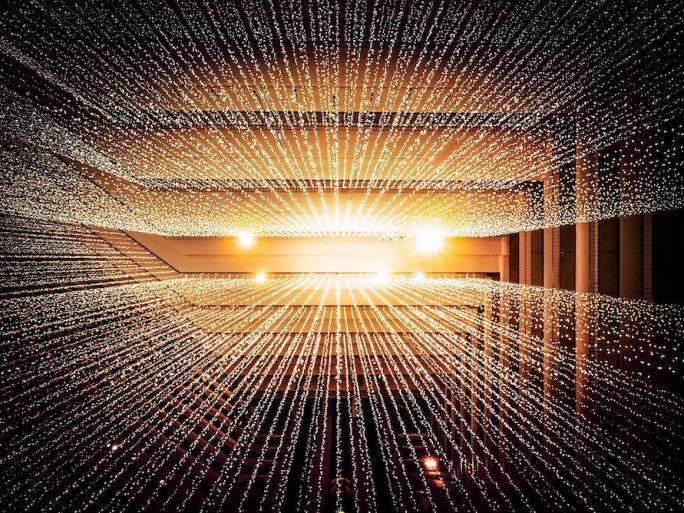UK Spearheads Quantum Key Distribution Breakthrough

Team headed by University of Glasgow develops technique for generating and detecting entangled photons at wavelength less susceptible to solar interference
A team of researchers headed by the University of Glasgow has made what it called a breakthrough in the development of quantum-enhanced optical systems, which could have implications for future encryption, communications and measurement systems.
The use of quantum-entangled particles, such as photons, are expected to enable technologies such as quantum key distribution, which could be used to make communications between two parties virtually uncrackable.
Methods for entangling photons at shorter wavelengths of between 700 and 1550 nanometres are already well-established, but those wavelengths are vulnerable to interference from the sun’s light when transmitted over the open air, making them difficult to use in applications such as secure satellite communications systems.
In a paper published on Friday, however, researchers from the UK, Japan and Germany demonstrated a new method for generating and detecting quantum-entangled photons further into the infrared, at 2.1 micrometres, which could help to overcome such interference issues.

Quantum entanglement
Quantum entanglement is a quantum effect in which two particles become inextricably linked to one another, so that the way one behaves affects the other, regardless of the distance between them.
If used in place of conventional cryptographic keys, quantum-entangled particles could be used to create virtually uncrackable encryption for communications.
Quantum-entangled photons are considered especially promising for long-distance secure communications, such as those transmitted over satellite systems.
Dr Matteo Clerici, senior lecturer at the University of Glasgow, who led the new research, said the team’s breakthrough was to generate and detect quantum-entangled photons at a wavelength where they are less likely to be affected by background solar radiation when transmitted across free space.
The wavelength used is also less likely to be absorbed by gases that affect the wavelength of two micrometres, he said.
“Also, the sunlight is much less overwhelming in this region – it’s one-third the brightness that it has at standard telecommunication wavelengths around 1550 nm, for example,” Clerici said.
“That’s thus far been one of the key stumbling blocks to advancing daylight quantum key distribution in free space — if the wavelength that your photon detector is sensitive to is too close to the wavelength of the photons that are coming towards it from the sun, your detector can easily be blinded.”
Real-world testing
The team worked with private firm Covesion to develop a nonlinear crystal made from lithium niobite that’s suitable for operating at 2.1 micrometres.
The entangled photons are generated when short pulses from a laser source, provided by private firm Chromacity, pass through the crystal.
The entangled photons are then sent toward a specially designed superconducting nanowire single-photon detector.
“We’ve found a way to reliably create high-quality paired photons at a new wavelength, making them well-suited to use in quantum communications,” said Dr Adetunmise Dada, research associate at the University of Glasgow.
He said the team’s next step is to test the technology under realistic outdoor conditions.
The research could be vital in the development of commercial quantum key distribution (QKD) systems able to operate in cloudy environments and during the day as well as at night, according to RAL Space, a UK government-backed space research and technology development laboratory that was not involved in the research.
The team’s paper, “Two-photon Quantum Interference and Entanglement at 2.1 μm”, is published in the journal Science Advances.